Piolets d'Or Announces the "Significant Ascents" of 2023
This list of 68 climbs is effectively a "long list" used to select nominees of the prestigious alpine award.

We depart the bustling port of Ísafjörður on a small motorboat; eight skiers bound for an old farmstead in Hornstrandir, the remote, uninhabited northern tip of Iceland’s West Fjords. The brightly colored houses of town fade into the distance, and after a choppy, hour-long channel crossing, we slip into the protected waters of the fjords. Kvíar, a three-story cement farmhouse, is the only structure for miles around, and its red roof stands out like a beacon against a backdrop of rock and snow. We unload boxes of food and ski gear onto a beach of polished boulders and the boat pulls away, leaving us alone in silence.
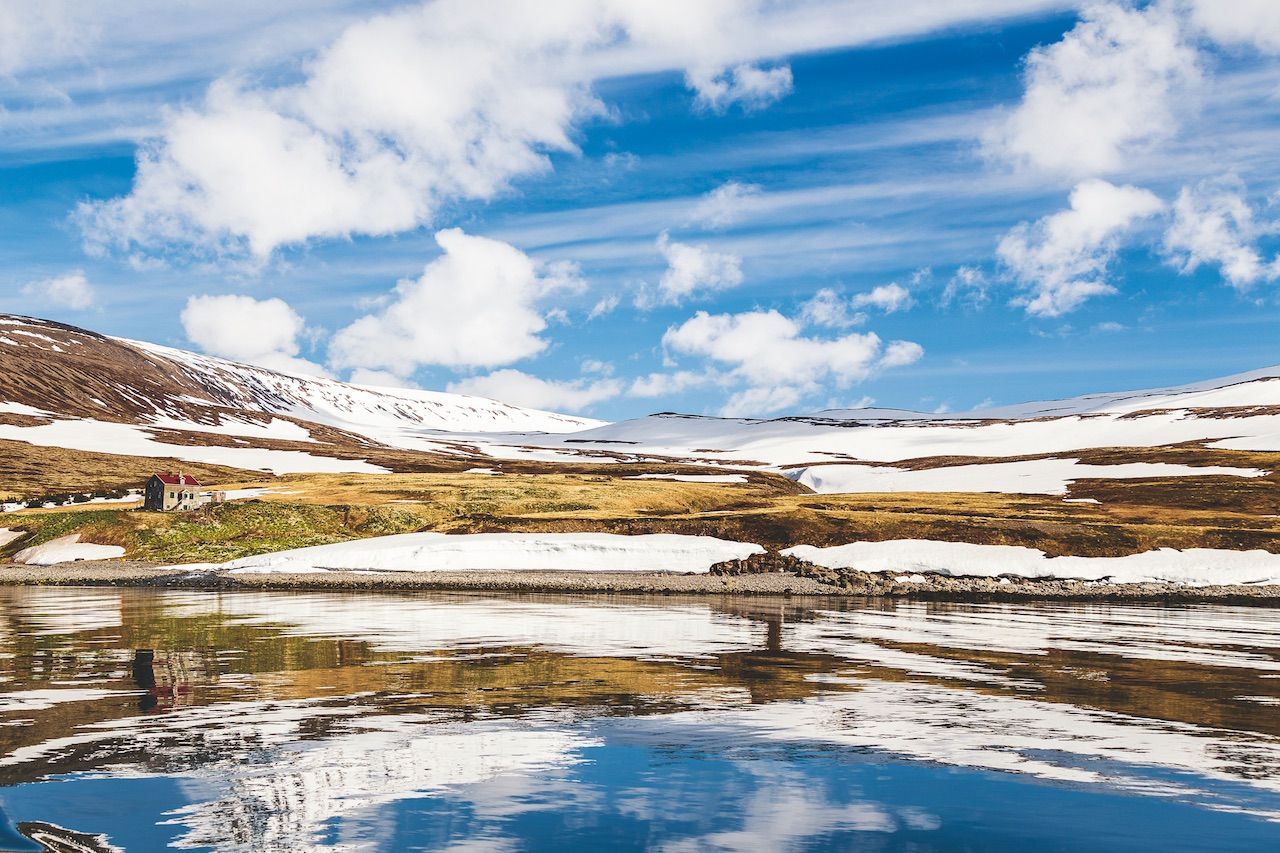
Wild rhubarb sprouts, the first signs of plant life after a long, harsh winter, line the stone path to the awkwardly tall, crumbling house. Perched atop a hill in the stark, tundra-like landscape with nothing to break the wind or weather, the big dark eyes of its windows look out to sea. A green door opens into a dim, narrow hallway. I step inside and immediately feel the energy of residents from a past era. The cracked walls, the creak of worn floorboards, and the polished wooden railing leading upstairs breathe history.
Runar Karlsson, our guide and the owner of local adventure company Borea, shows us into a cozy wallpapered living room. “Written records indicate that this area has been inhabited since the 14th century. But this house was built by two families much more recently, in the 1900s. Twenty-seven people lived here at one point, one family downstairs and one family upstairs. When I started working on the house, a lot of their stuff was still here: those wooden skis in the corner, farming equipment. They abandoned the farm in 1948,” he explains.
[gallery type="rectangular" size="full" ids="8491,8492"]
In 1921, Jón Jakobsson and his family built what is still the largest house in Hornstrandir, bringing cement and building supplies by rowboat across the channel from the town of Bolungarvík. They crossed the mountains to the north coast to collect wood that had drifted over from Siberia to use for house beams and boat construction. The farm and boat-building business prospered, but after just over 25 years in the new house, they left their remote hilltop home in favor of life in town.
Less than one degree south of the Arctic Circle, Hornstrandir juts out from Iceland into the Strait of Denmark. North Atlantic winds sweep across the high peninsula while the fjords, fingers of ocean reaching inland, remain sheltered. Along the walls of the fjords, tiers of jet-black basalt cliffs cut by deep snow-filled couloirs alternate with smooth, open bowls that descend in one sustained drop from the broad upper plateau to turquoise lagoons far below. Down at the rocky shoreline, the occasional call of a black and white Guillemot, gliding above the water, beckons us to explore this stark landscape with our skis.
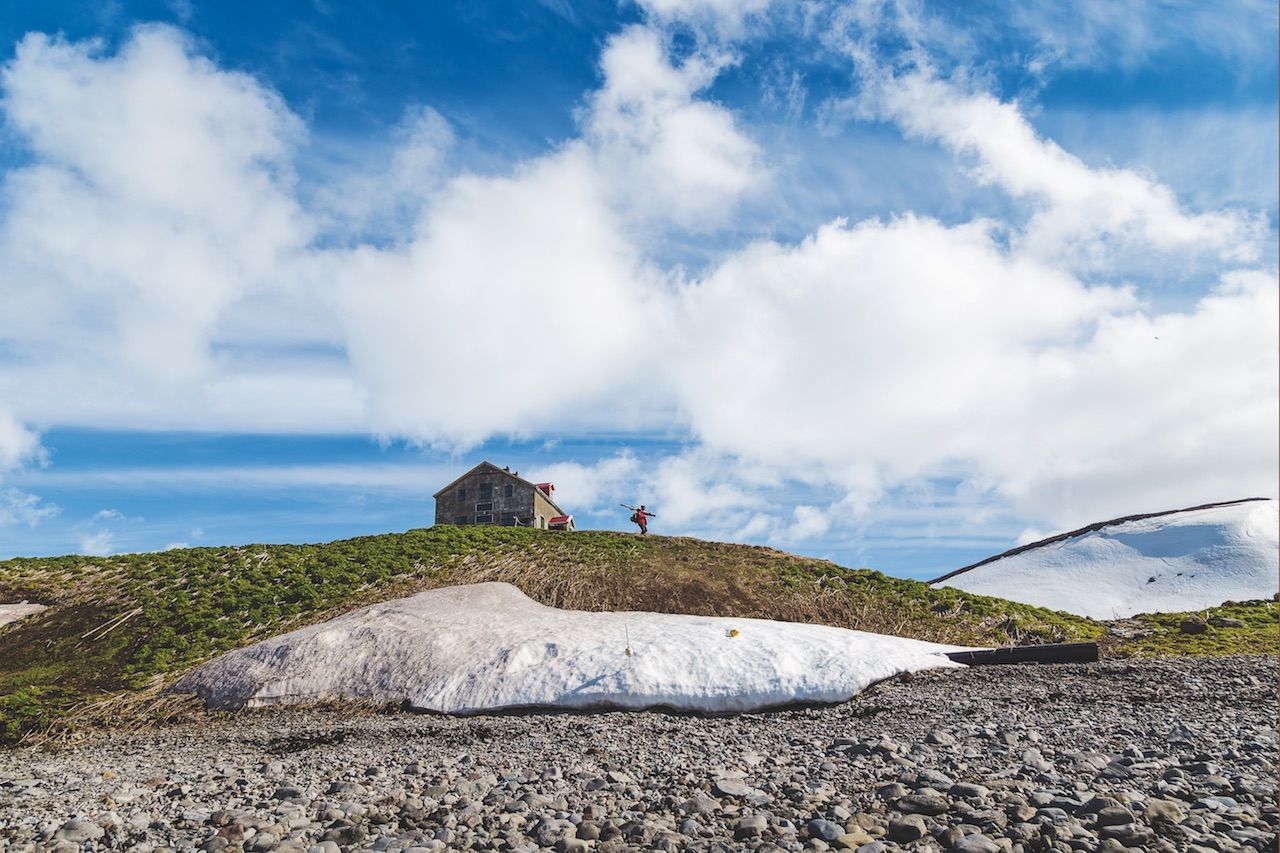
While the rest of the world hurdles into the future, Hornstrandir is retreating into the past. Instead of following the global trend of increasing habitation and land use, this region that was once widely populated is now nearly abandoned. In the early 1900s, almost 500 people lived in small communities scattered across the peninsula. Lacking access roads, inhabitants traveled the long distances between settlements by boat, horse, or foot
Surviving in these remote farmsteads and towns demanded an intimate understanding of the land and sea. For hundreds of years, families lived off the natural bounty.They gathered berries, edible plants, and mussels; fished; hunted birds and seals; and collected bird eggs from massive sea cliffs where six million seabirds still nest annually. Agricultural opportunities were limited, but inhabitants raised sheep and horses and took advantage of the short summer growing season to bolster their food supplies with crops of potatoes, turnips, and carrots. Life was tough and isolated, even by Icelandic standards.
Families began to leave Hornstrandir during World War II as job opportunities multiplied in larger coastal settlements. Fishing boats became motorized and grew in size, requiring bigger harbors and more laborers. This motivated the people from remote settlements to relocate in search of a better life. The last farmstead in Hornstrandir was abandoned in 1954. Twenty-one year later, the local landowners came together to establish the Hornstrandir Nature Reserve, protecting the isolated, windswept region against grazing and motorized travel while returning the land to its wild state.
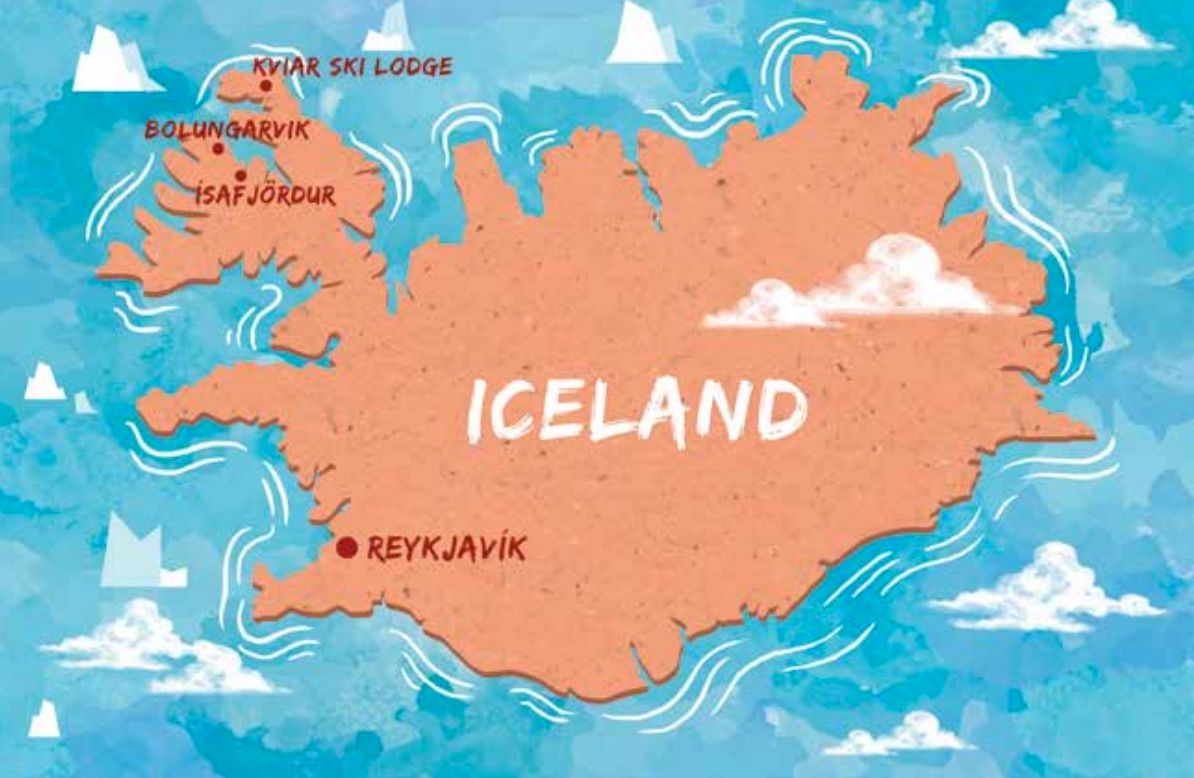
Kvíar sat unkempt and unused for 64 years until Runar approached the Jakobsson family with the idea of turning the house into lodging for hikers and skiers. The structure stood strong despite years of neglect, a testament to the skills and craftsmanship that went into its construction. After a substantial remodel, the house has indoor plumbing, radiators, solar electricity, and a new roof. Having endured decades of isolation, Kvíar is getting a second chance at life.
I help prepare dinner in the basement kitchen, chopping potatoes, carrots, and onions for lamb stew while imagining that Kvíar’s first residents might have once done the same.
Spice racks and pots and pans hang on the exposed cement walls and an antique stove in the corner provides heat and constant hot water for tea, as well as a drying area for jackets, ski skins, and boots. Golden evening light filters through a small window facing the ocean. Keree Smith and Camilla Edwards, my co-chefs and friends, are very much at home in the kitchen, having both worked for a season at Kvíar as guides and cooks.
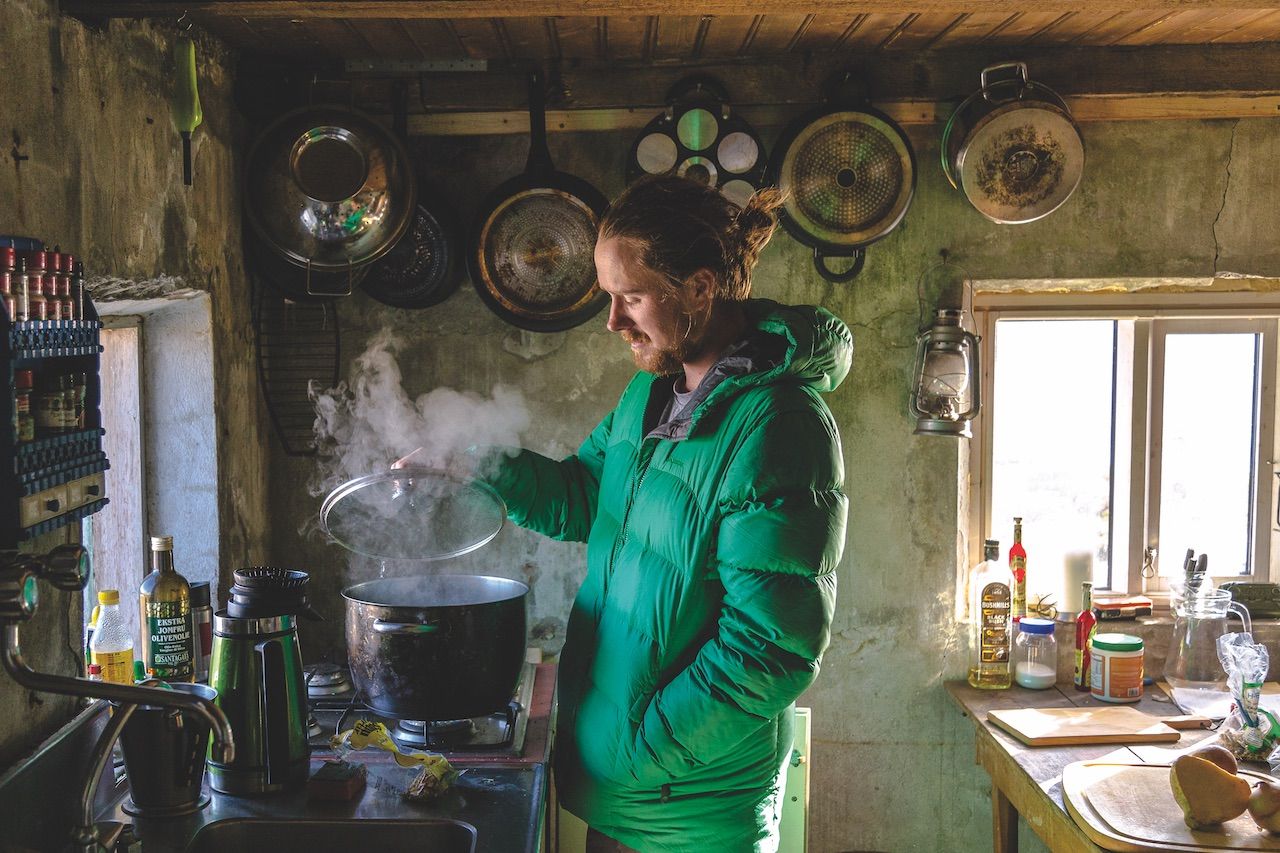
While we’re using the house for a similar purpose as Kvíar’s previous inhabitants—shelter from the elements—we’re here to use the landscape in an entirely different way. We’re here to ski. It’s spring, so we’re not in search of powder. Instead, we seek “corn,” a snow surface created by multiple melt-freeze cycles, transforming snow crystals into small, uniform, kernels. Perfect corn is hero snow: fast, consistent, and fun to ski. But it’s also fleeting: too little sun and it remains solid ice, too much sun and it becomes soupy mush.
After our group discusses tomorrow’s ski options over dinner, I drift upstairs to bed, listening to waves rushing against the rocks and wondering about the people who slept in this room decades ago.
Were they lonely here? Or just alone? Even now, the isolation, especially during the long winter months, could be both intensely crushing and immensely enjoyable.
I fantasise about spending a month here in the thick darkness of an arctic winter, battered by snowstorms, embracing the solitude and filling the long winter nights writing and reading by a crackling fire.
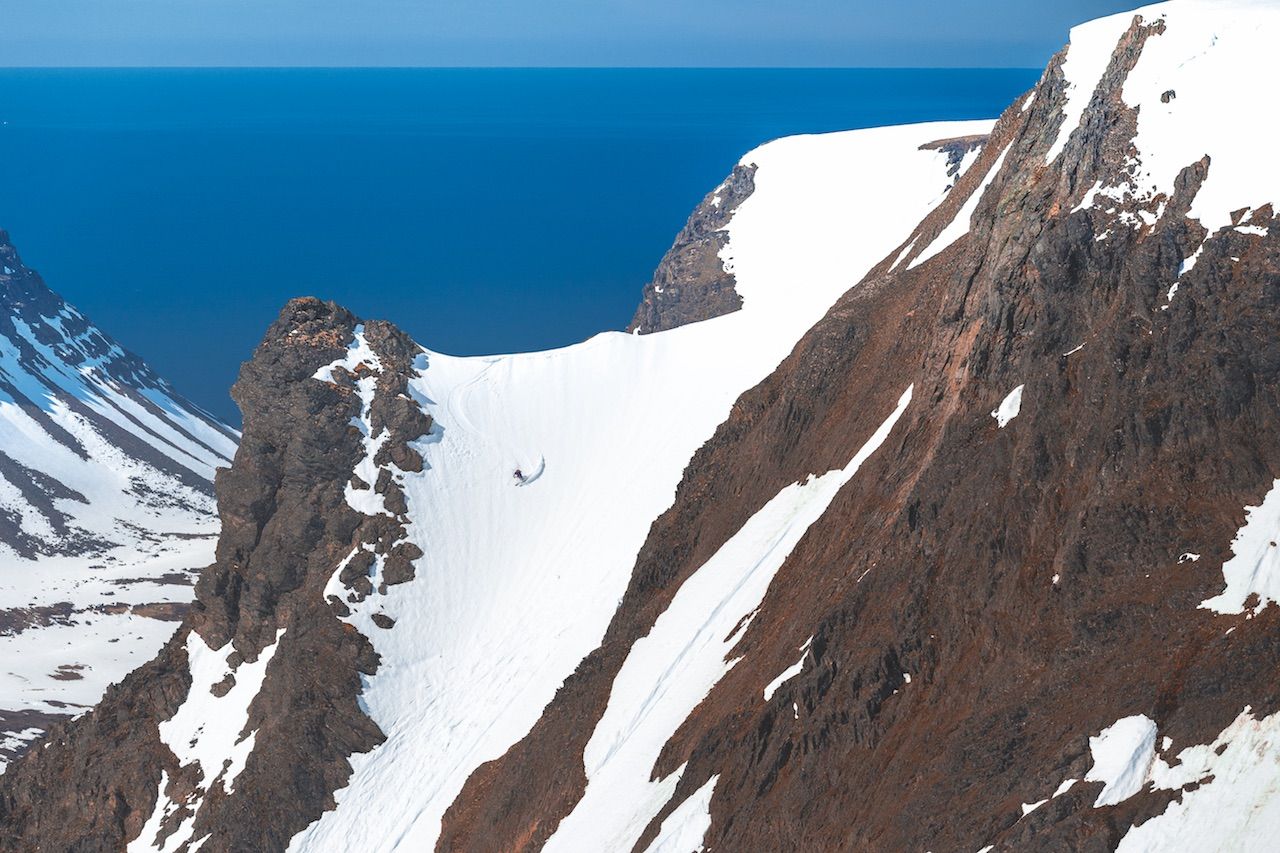
The following morning, we stack our skis on a motorised Zodiac raft and set off deeper into the fjords. Passing towering dark cliffs bright with green moss, the boat skims smoothly across the calm morning water. Lounging on rocks, seals look up and plop into the water at our approach. Runar drops anchor in a small bay and after getting out of the boat, we begin a long traversing climb towards a pass, our skis scraping loudly against the still-firm snow. As we gain the saddle, two farmsteads become visible far below, tucked away in a bay protected from the open ocean that stretches north towards Greenland. We scramble up the narrow, rock-lined ridge to a prominent outlook where Runar grins as if he’s about to share a secret with us. “The Italian Face,” he announces, pointing down a steep, sweeping bowl basking in the afternoon sunlight. After we transition to ski mode by taking off our skins and locking down our heels, we drop into the bowl one at a time, carving long, swift turns in the corn as the slope funnels down towards the bay.
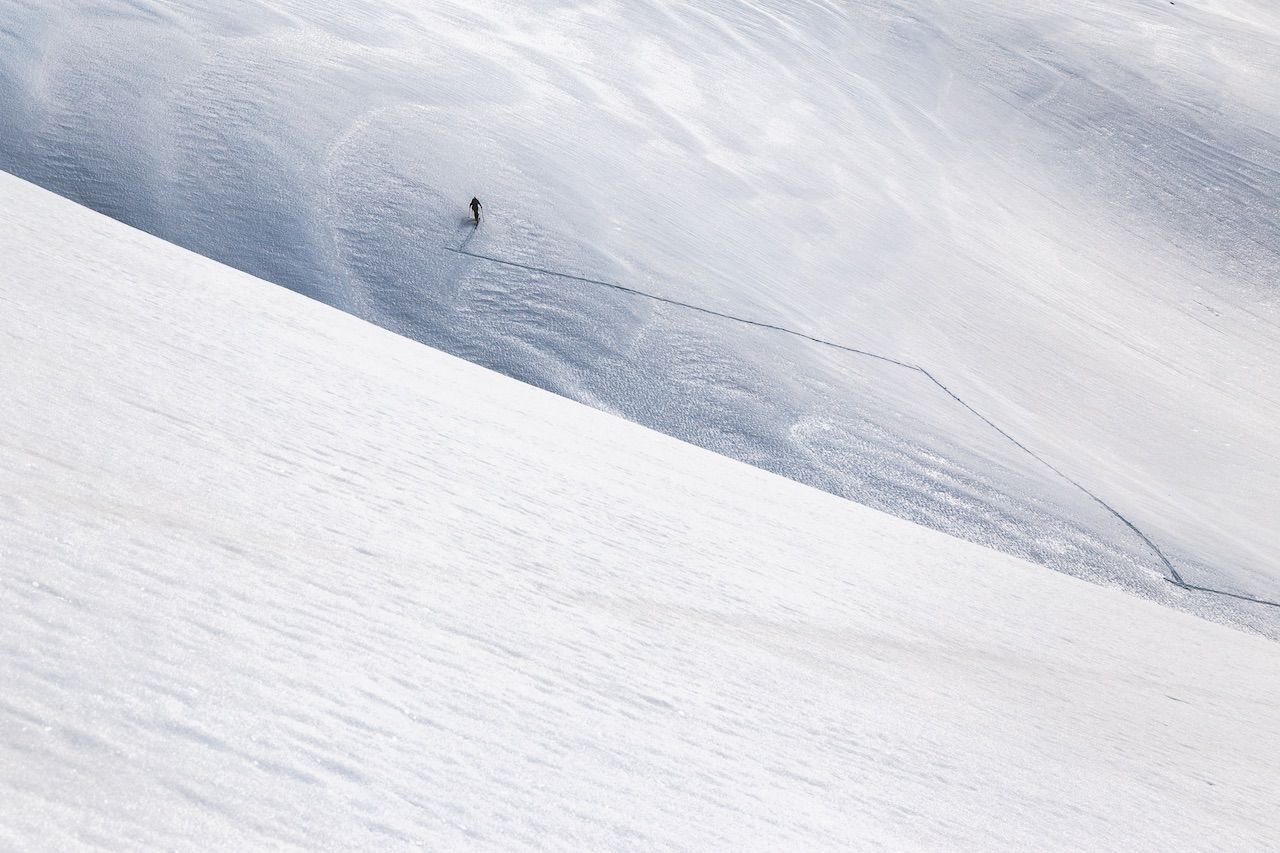
Back at Kvíar, we prepare local Arctic char for dinner, throwing food scraps in the front yard for wild Arctic foxes. Runar strums old Icelandic ballads on his guitar, the lyrics meaningless to us but the tune making us tap our feet and nod our heads. He plays song after song and it’s easy to lose track of time; as the days grow longer, the sun no longer functions as a reference.
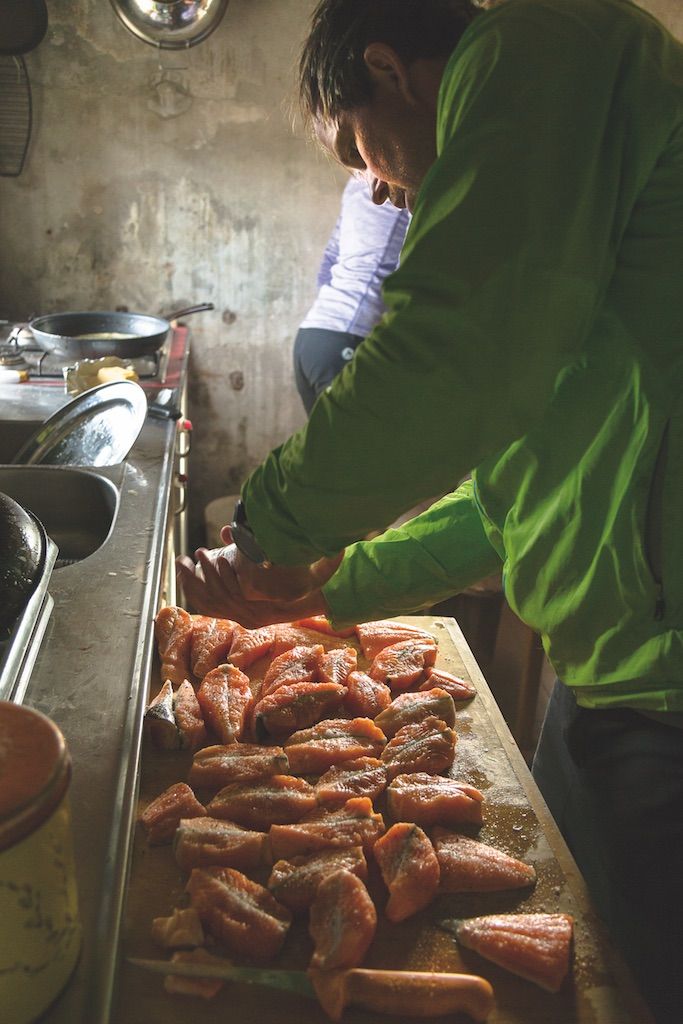
Though it’s nearly 10pm, sunset is just beginning. After the jam session, I walk down to the beach and watch two scruffy, burnt orange Arctic foxes scour the shoreline for dinner. As I wander between tide pools and seaweed-covered boulders, I hear an unfamiliar whooshing sound. Staring into the fading light, I see three whales swimming close to shore, the mist from their blowholes illuminated by the last light of day. Whale breaths sigh across the water, and I stand still, listening to their giant exhales and watching them glide across the fjord.
The next day, we prepare to ski a mountain known as Einbuii - ‘The Hermit’. We’ve eyed its central couloir from the raft in passing, and with sunny skies and calm winds we ascend a valley curving around the backside of the mountain to gain the top of the plateau. Keree leads us to the chute’s narrow entrance and we edge our skis over the drop, testing the consistency of the snow and examining the clean shot running straight to the azure blue lagoon 1,500 feet below. After making a few cautious turns between the high walls, I realize that we’ve hit the snow in ideal conditions once again. The ski down to the ocean is pure bliss and I hear the others hooting in delight as they make their way down to join me.

The week is a blur of incredible skiing, though the snow is melting fast. As we come to our last day, I think about past generations who skied across this landscape to trade with neighboring communities. Large cairns mark their routes, stacks of black volcanic boulders five feet high that can still be followed when the area’s famously thick fog descends and blocks out all visibility. We don’t follow them, as we’re seeking steep runs and interesting couloirs rather than the most direct routes between farmsteads. But these relics remind me of the dynamic state of the environment and its people.

Motoring away in a modern boat, I can’t help but think that occasional leisure habitation; skiing, hiking, and kayaking, are the best uses for such a wild, remote area. Eking out a living here would be tough, and the landowners’ decision to designate the entire region as a protected Nature Reserve means that we’ll be able to enjoy its unique, austere beauty for generations to come. We return to the shops, restaurants, and roads of Ísafjörður, but its nice to know that Kvíar is waiting for our return—peaceful, isolated, and with untold numbers of ski runs to explore.
Feeling inspired? Head to The Outdoor Voyage to book your own Icelandic experience.
This article is featured in the 13th edition of The Outdoor Journal print magazine. Story and images by Mary McIntyre.
2nd best newsletter in the universe